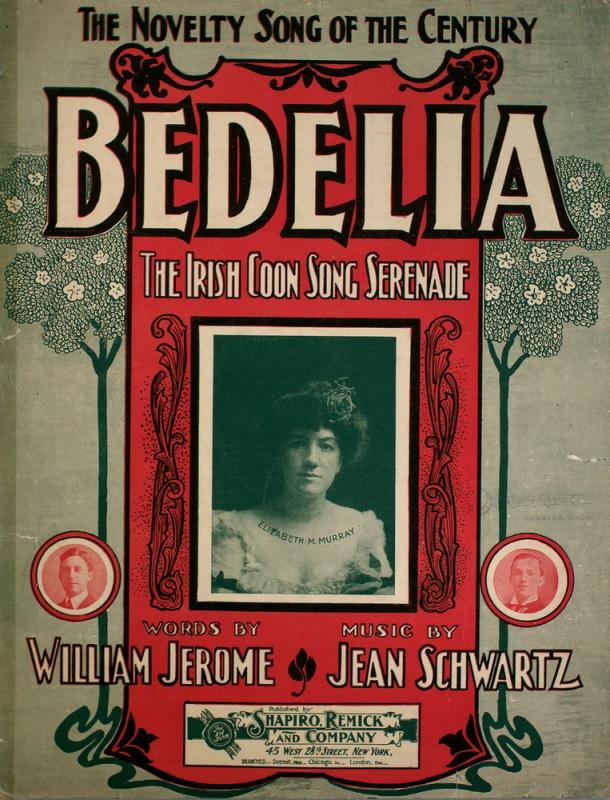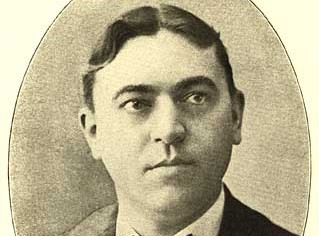Bedelia, The Irish Coon Song Serenade
It’s not clear what makes this record, sung by Arthur Collins, a “coon” song. It has some elements of the ragtime syncopation that “coon songs” helped introduce, and Collins was nicknamed "the King of Ragtime." Possibly the singer was imagined as an African American in love with an Irish immigrant, but the singer makes no effort at dialect. As the image indicates, women sang the song as well as men. It may simply be an attempt to cash in on the popularity of the genre while also appealing to Irish Americans. The song demonstrates the way American popular music mixed genres and used ethnic, gender and racial identity in slippery ways


